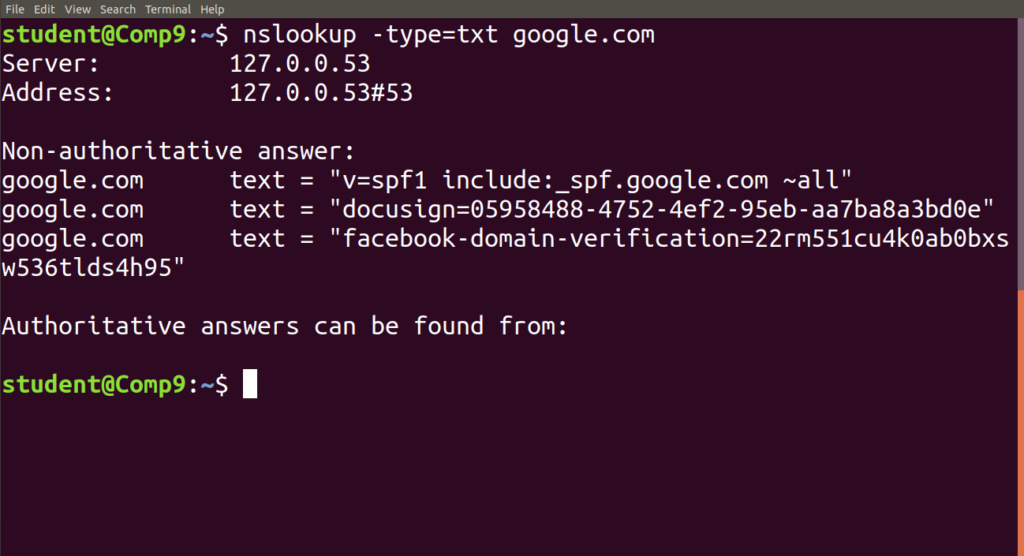When it comes to understanding the relationship between domain names and IP addresses, performing a reverse IP address lookup command can provide valuable insights.
This process allows you to find the domain name associated with a specific IP address.
In this article, we will explore how to perform a reverse IP address lookup using the nslookup command in Windows and the dig command in Linux.
Performing a Reverse IP Address Lookup in Windows
Windows users can utilize the nslookup command to perform a reverse IP address lookup. Follow these simple steps:
- Open the Command Prompt on your Windows machine.
- Type
nslookupfollowed by the IP address you want to lookup. For example, if you want to find the domain name associated with the IP address8.8.8.8, you would typenslookup 8.8.8.8. - Press Enter.
- The Command Prompt will return the domain name associated with the IP address you entered.
To summarize, the command in Windows looks like this:
nslookup <IP address>
Performing a Reverse IP Address Lookup in Linux
Linux users can utilize the dig command to perform a reverse IP address lookup. Follow these steps:
- Open a terminal window on your Linux machine.
- Type
dig -xfollowed by the IP address you want to lookup. For example, to find the domain name associated with the IP address8.8.8.8, you would typedig -x 8.8.8.8. - Press Enter.
- The terminal window will return the domain name associated with the IP address you entered.
To summarize, the command in Linux looks like this:
dig -x <IP address>
Examples
Here are some examples of how the commands would look in both Windows and Linux:
Windows:
nslookup 8.8.8.8Linux:
dig -x 8.8.8.8Understanding the Output
The output of the nslookup or dig command will vary depending on the IP address you are looking up.
Typically, the output will include the domain name associated with the IP address and other information, such as the IP address’s reverse DNS record.
It’s important to note that if the IP address you are looking up does not have a reverse DNS record, the nslookup or dig command will not return any results.
The Opposite of nslookup: Introducing dig
While nslookup is commonly used for forward DNS lookups, there is an opposite command called dig that specializes in reverse DNS lookups. In simple terms, nslookup is used to find the IP address of a domain name, whereas dig is used to find the domain name associated with an IP address. Understanding the difference between these two commands is essential.
Here is a table that summarizes the differences between nslookup and dig:
| Feature | nslookup | dig |
|---|---|---|
| Purpose | Forward DNS lookup | Reverse DNS lookup |
| Syntax | nslookup <domain> | dig -x <IP address> |
| Output | Domain name | IP address |
The Difference Between IP Lookup and Reverse IP Lookup
To fully grasp the concept of reverse IP address lookup, it’s important to understand the difference between IP lookup and reverse IP lookup. These two processes serve different purposes within the domain name system (DNS).
- IP lookup is the process of resolving a domain name to an IP address. For example, when you type
www.google.cominto your web browser, your computer performs an IP lookup to translate the domain name into its corresponding IP address (e.g., 172.217.0.142). - Reverse IP lookup, on the other hand, is the process of resolving an IP address to a domain name. For instance, if you have an IP address like 172.217.0.142 and you want to find out the associated domain name, you can perform a reverse IP lookup.
Here is a table that summarizes the differences between IP lookup and reverse IP lookup:
| Feature | IP Lookup | Reverse IP Lookup |
|---|---|---|
| Purpose | Resolves domain to IP | Resolves IP to domain |
| Syntax | nslookup <domain> | dig -x <IP address> |
| Output | IP address | Domain name |
Practical Uses of IP Lookup and Reverse IP Lookup
Both IP lookup and reverse IP lookup serve practical purposes in various scenarios. Here are a few examples of how they can be utilized:
- Network troubleshooting: By performing IP lookup and reverse IP lookup, you can identify potential issues and troubleshoot network problems effectively. For instance, if you’re experiencing difficulties connecting to a specific website, performing these lookups can help pinpoint the source of the problem.
- Security analysis: IP lookup and reverse IP lookup are valuable for security purposes. Conducting a reverse IP lookup allows you to discover other websites hosted on the same IP address, which can help identify potential security risks or malicious activities.
- Marketing insights: These lookups can also provide marketing benefits. By performing a reverse IP lookup, you can determine the location of your website visitors. This information can be utilized to target marketing campaigns more effectively, catering to specific geographic regions.
Performing a reverse IP address lookup command is a valuable skill for various individuals, from network administrators to digital marketers. By following the steps outlined in this article and understanding the differences between IP lookup and reverse IP lookup, you can harness the power of these commands to gain deeper insights into the relationships between domain names and IP addresses.
I hope this guide has been helpful in demystifying the process of reverse IP address lookup commands. If you have any further questions, feel free to reach out.
